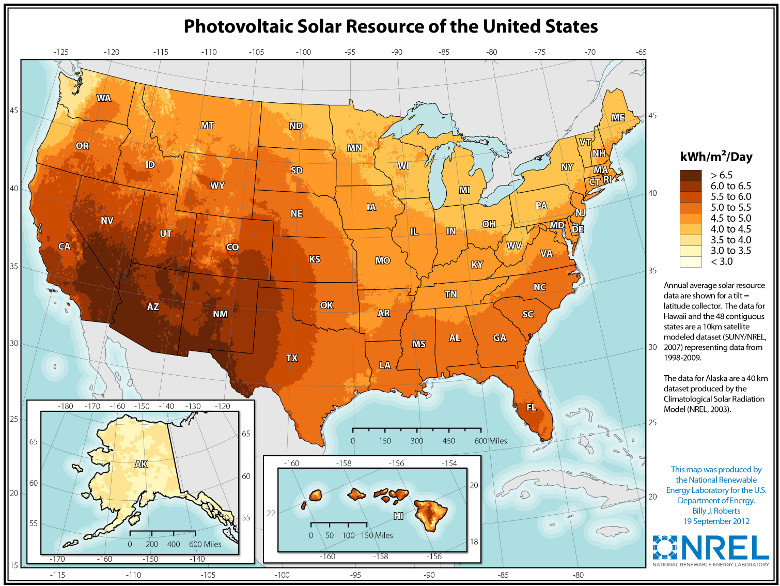The Amount of Direct Sunlight your House Receives
As you might guess, the amount of sunlight that you receive changes year-to-year, based on the season, your location on the planet, how many trees you have in your yard, and a host of other factors. This is an important step when designing a solar power system for your home: if you underestimate the amount of sun you'll end up buying more solar modules than you need. If you overestimate the sunlight, you won't buy enough modules.
The average amount of sun that you receive each day throughout the year is called your Peak Sun Hours. A single Peak Sun Hour is equal to 1 KWH of electricity for each square meter of solar panel. So, if your appliances consume 25 KWH of electrical power each day, and your roof receives 1 Peak Sun Hour a day, and you were hoping to supply 40% of your electricity needs (10 KWH) from solar power, you would need to install 10 square meters of solar panels. Of course, if you live in a sunny part of the world, you might receive 5 (or more) Peak Sun Hours per day. In that scenario, you'd only need 2 square meters to meet your goals.
Note: these estimates are inaccurate: they don't take into account the efficiency with which the solar modules convert the sun's energy into electricity. They are used simply to illustrate the relationship between Peak Sun Hours and the number of solar modules that you need to buy.
The US government publishes solar maps that provide 30-year averages for the Peak Sun Hours across the United States. You can find the latest solar map below. These maps can give you a very general sense of the amount of direct sunlight that your home or business receives. However, you will need to work with your solar panel contractor to generate an accurate estimate, as there are many other issues to consider, such as your roof's orientation towards the sun, the pitch of the solar panels, and the amount of shade that will fall on the panels.


